When you buy through links in our articles, Future and its syndication partners may earn a commission.
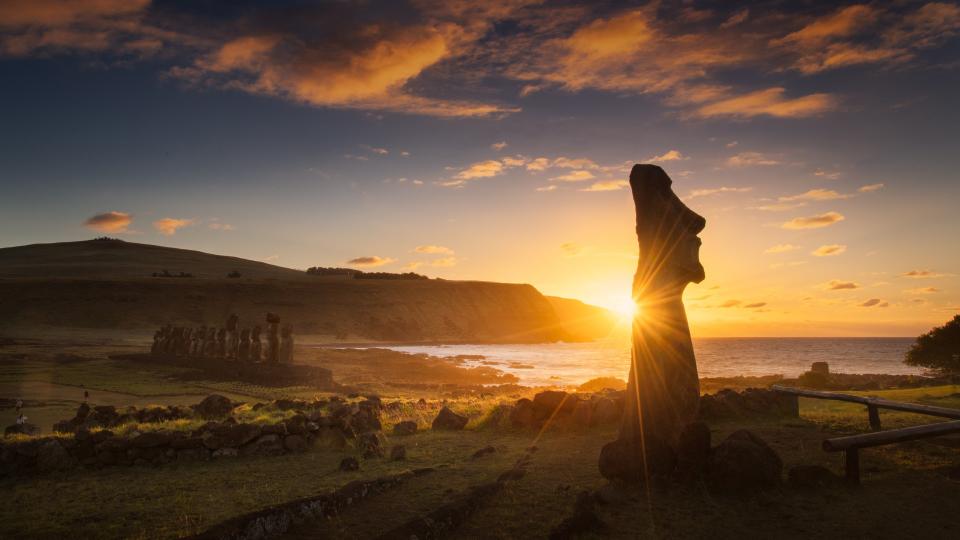
After the excitement of the Great North American Solar Eclipse last April, many have been wondering when the next solar eclipse will occur. The answer to that question is Tuesday, October 2, when an annular solar eclipse will occur.
This is the type of solar eclipse where the moon is just a little too far from the Earth to completely cover the sun, leaving a ring of sunlight around the moon’s silhouette. You can think of it as the “penny-on-nickel effect,” where the penny represents the moon and the nickel represents the sun.
You may recall that last year, on October 14th, a similar eclipse swept across parts of the western and southern United States, as well as the Yucatan Peninsula in Mexico, Central America, southern Colombia, and northern Brazil. Millions of people living within the path of the annularity were able to watch (weather permitting) as the sun transformed into a spectacular “ring of fire” for more than 5 minutes.
But for this upcoming annular solar eclipse on October 2, things will look very different. Unlike last year, when the path of the annular phase of the eclipse passed over many accessible population centers, this year it will prove quite a challenge to see the solar ring.
That’s because about 95 percent of the eclipse’s path will be over open ocean waters.
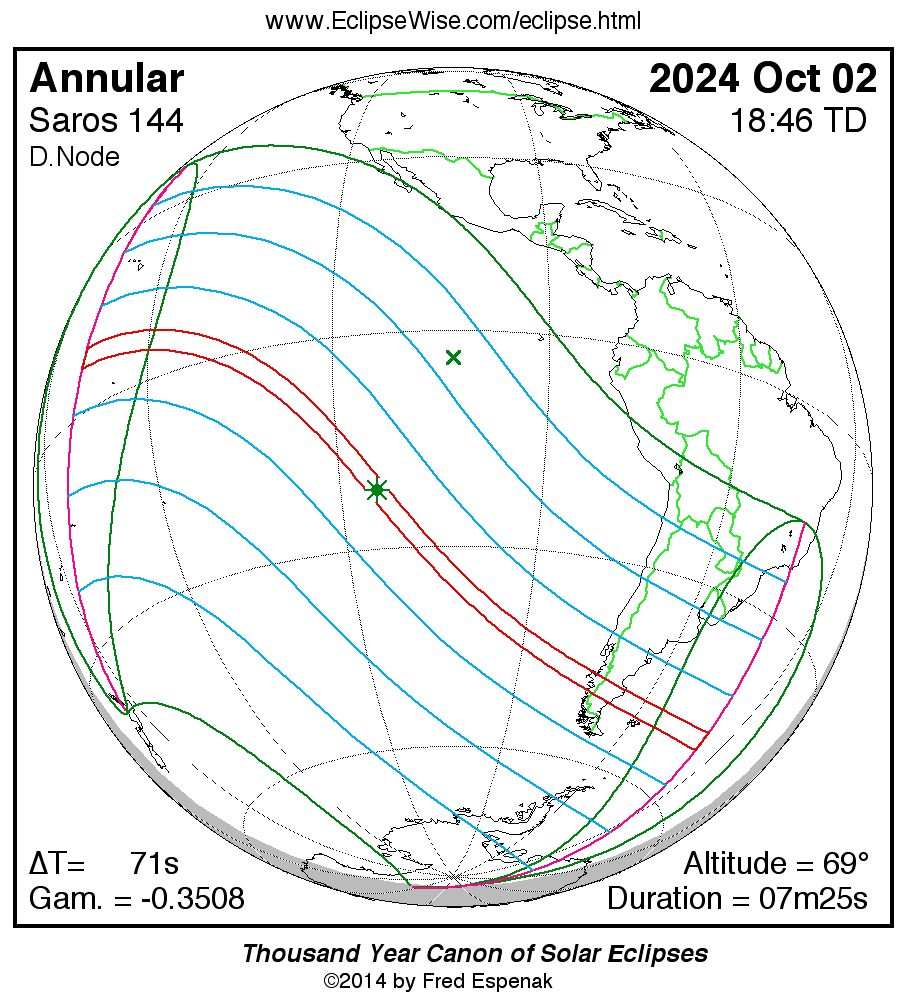

A trail across Oceania
The path of the eclipse that creates this “ring of fire” effect begins at sunrise at a spot over the central Pacific Ocean just north of the equator, about 1,000 miles (1,600 kilometers) southwest of Honolulu.
Shortly thereafter, the moon’s shadow will move eastward, then southeastward, across the equator and into the South Pacific Ocean, first north of the island nation of Kiribati, then northeast of French Polynesia and the Pitcairn Islands. At the time of greatest eclipse, the annular phase will last 7 minutes and 24 seconds at an altitude of 69 degrees. Here, the path of the eclipse is 165 miles (265 km) wide.
Yet there will be thousands of people hoping to see the sun and its rings from perhaps one of the most remote and isolated places on Earth: the legendary and mystical Easter Island.
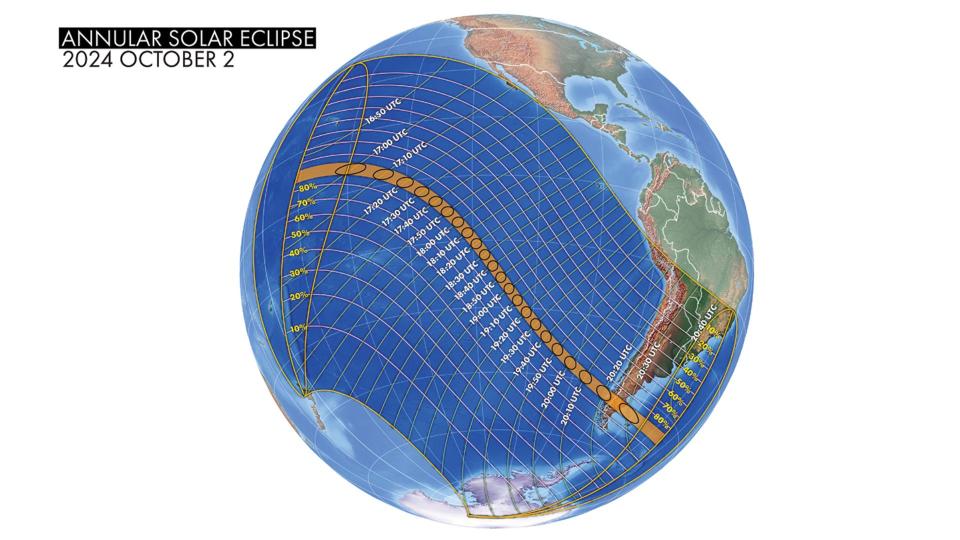

Coincidentally positioned
Easter Island, also known as Rapa Nui or Isla de Pascua, is a special area of Chile. It is a breathtaking open-air museum and UNESCO World Heritage Site, with much of the island protected within the Rapa Nui National Park. Coincidentally, it also lies almost directly in the path of the moon’s shadow on Sunday, giving locals and tourists alike the chance to witness a total solar eclipse.
The name “Easter Island” was given by the first recorded European visitor to the island, the Dutch explorer Jacob Roggeveen, who came across the island on Easter Sunday, April 5, 1722, during his search for Davis or David’s Island. The official Spanish name of the island, Isla de Pascua, is Spanish for “Easter Island.” It lies 2,200 miles (3,600 km) west of continental Chile and 1,290 miles (2,075 km) east of the Pitcairn Islands. Sala y Gómez, 260 miles (415 km) to the east, is closer but uninhabited. It lies directly south of Salt Lake City and directly east of Brisbane, Australia; it is the easternmost and nearly southernmost island in the South Pacific.
About 1,200 or 1,300 years ago, a double-hulled canoe full of sailors from a distant culture landed on Easter Island. In the centuries that followed, a remarkable society developed in isolation on the island. For reasons still unknown, they began carving gigantic statues out of volcanic rock. These enormous monuments, known as “moai,” are among the most incredible ancient relics ever discovered. At least 288 of them once stood on enormous stone platforms called ahu. There are about 250 of these ahu platforms, spaced about half a mile apart, and they form an almost continuous line around the island’s perimeter.
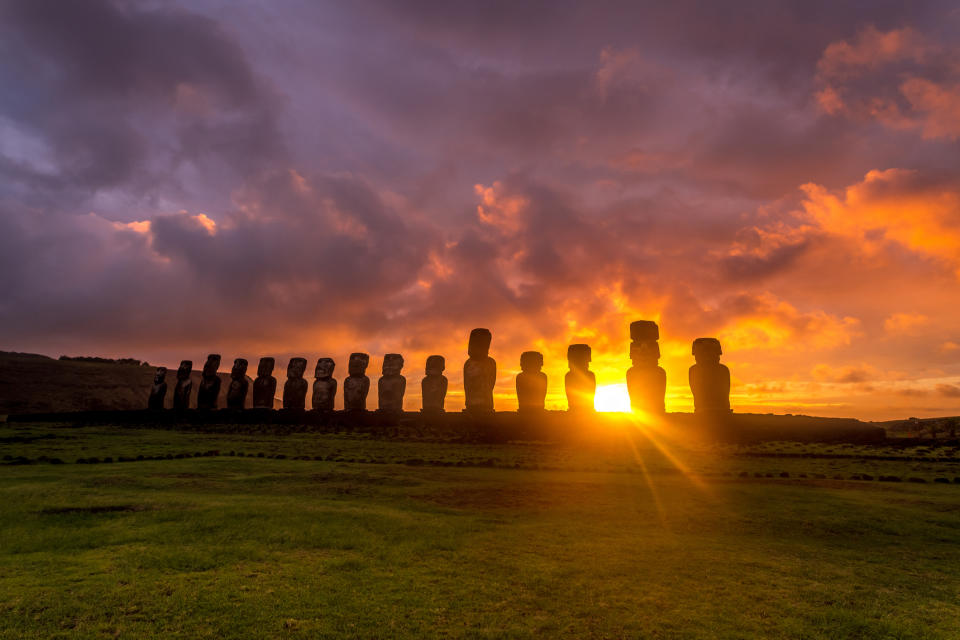

Another 600 moai statues, in various stages of completion, are scattered across the island, either in quarries or along ancient roads between the quarries and the coastal areas where the statues were most often erected. The average statue is 14 feet, 6 inches high and weighs 14 tons. Depending on the size of the statues, it has been estimated that between 50 and 150 people were needed to drag them across the countryside on sleds and rollers made from the island’s trees.
Nearly 8,000 people live on this 64-square-mile (166-square-kilometer) swath of hills and volcanoes. And yet, despite being the most remote inhabited island on Earth, tourism has grown dramatically, from 22,000 tourists in 2003 to 100,000 in 2024. And that number is likely to continue to grow. With the opening of Mataveri Airport in 1967, travel to Easter Island from Chile and Tahiti became easy. A Boeing 787 Dreamliner flies from Santiago, Chile to Easter Island six times a week. The flight takes about five hours.
As seen from Easter Island, the Moon will begin to cross the Sun’s disk at 11:23 a.m. local time, and at 1:04 p.m. an off-center solar ring will form that will last for about 6 minutes and 5 seconds. After the ring phase ends, the Moon will slowly move away from the Sun’s disk, with final contact occurring at 2:52 p.m.
Not comparable to a total solar eclipse
It must be emphasized that while an annular solar eclipse is a very unusual phenomenon to witness, it is far removed in spectacle from the spectacle offered by a total solar eclipse.
During a total solar eclipse, the sky darkens dramatically, similar to what you would experience 30 to 40 minutes before sunrise or after sunset. The brighter stars and planets suddenly appear in view. The horizon is lined with exotic colors of orange and saffron, and the eclipsed sun is surrounded by the incredible corona, or outer atmosphere of the sun. Only during this time of totality can you look directly at the sun without damaging your eyes.
This is not the case with an annular solar eclipse.
You should protect your eyes at all times, even during the ring of fire phase. During annularity, about 87 percent of the total solar disk surface is covered by the dark silhouette of the moon. However, the remaining 13 percent of the sun that is still visible is bright enough to obscure the corona, as well as all the stars and planets. The overall illumination of the sky will be somewhat dimmed, but certainly not as much as a sunrise or sunset sky. In short, comparing a total solar eclipse to an annular eclipse is literally like comparing night to day.
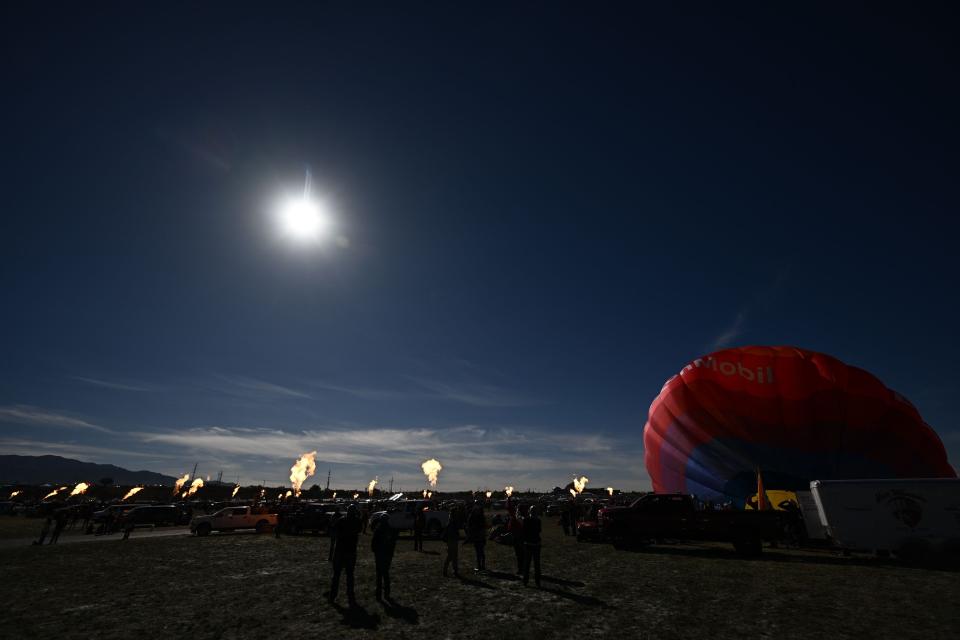

The final steps and then the finish
About 68 minutes later, the Moon’s antumbral (“negative shadow”) shadow makes landfall in South America, taking 12 minutes to cross Patagonia, from the Pacific Ocean over Parque Nacional Laguna San Rafael in Chile and exiting via the South Atlantic Ocean at Cañadón Once de Septiembre in Argentina. The path glides just north of the Falkland Islands and leaves the Earth’s surface north of the South Georgia and South Sandwich Islands.
Where to See a Partial Solar Eclipse
A partial solar eclipse will be visible at sunrise from the Hawaiian Islands and during midday over the southern two-thirds of South America. Below is a table of local times for the various phases of the eclipse, as seen from Honolulu and seven selected South American cities. Dashes indicate the sun is below the horizon. “Mag.” indicates the portion of the sun’s diameter that the lunar disk covers at maximum eclipse.
For example, from Honolulu, the maximum phase of the eclipse will occur at 6:45 a.m. Hawaii Standard Time. The magnitude is .586, which means that the dark disk of the moon will reach 58.6% of the disk of the sun.
Again, it bears repeating: looking at the sun without proper eye protection is dangerous. Even if you are in the path of the annular eclipse, you must protect your eyes, even during the “ring of fire” phase.
Upcoming attractions
On March 29, 2025a partial solar eclipse will be visible across much of Europe, northwest Africa, Greenland, Iceland, Atlantic Canada, and parts of New England.
The next total solar eclipse will occur on August 12, 2026 and will move south and east through eastern Greenland, western Iceland and northern Spain.
Joe Rao is a lecturer and visiting professor at New York’s Hayden PlanetariumHe writes about astronomy for Natural History magazinethe Farmers’ Almanac and other publications.